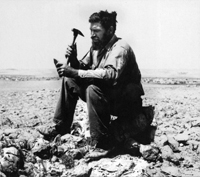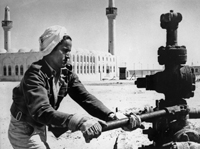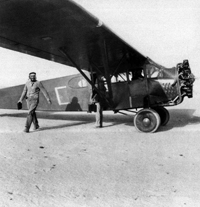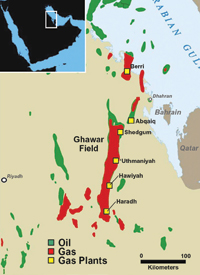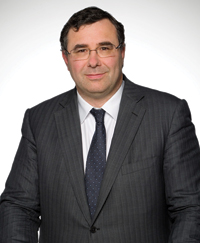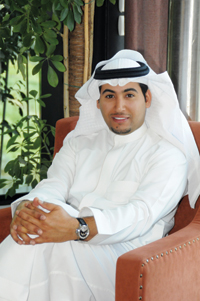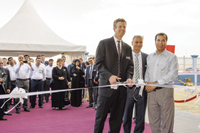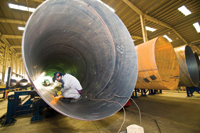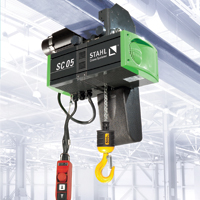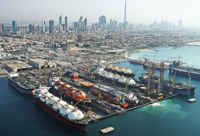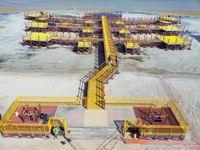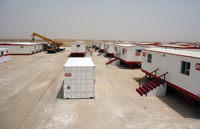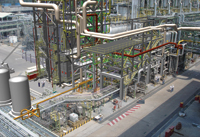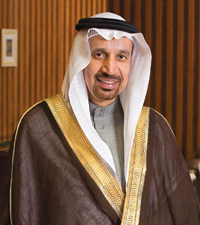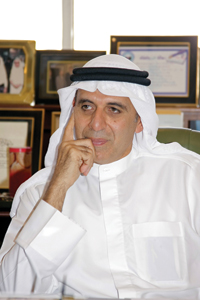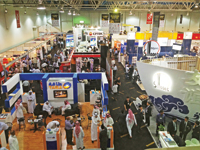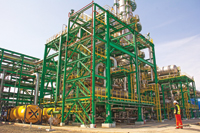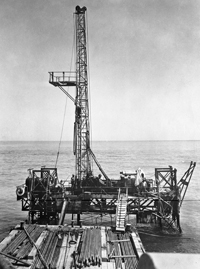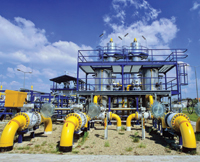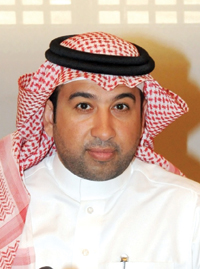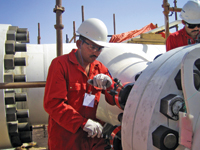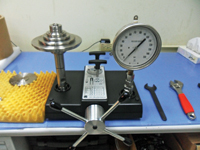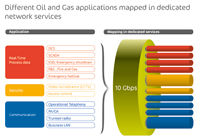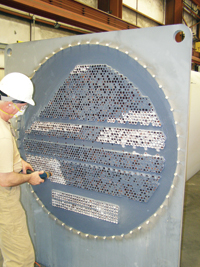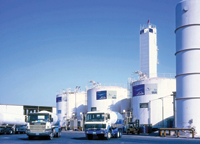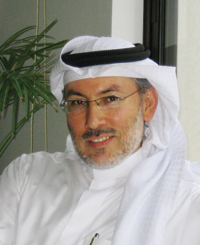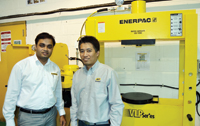
 Aramco ... a game changer
Aramco ... a game changer
IN THE early 1930s, interest in the Gulf region’s oil rises sharply, sparked by finds in Persia, Iraq, and Bahrain. After signing a concession agreement to search for oil in Saudi Arabia, the Standard Oil Company of California wastes no time preparing to explore the vast concession, putting in place the men and materials necessary to establish a presence in the kingdom.
In 1934 Schuyler B “Krug” Henry and J W “Soak” Hoover complete their survey and structural contour map of the Dammam Dome, the location of the first oil field discovery in Saudi Arabia.
Early American geologists rely on Bedouins to guide them from one place to another.
The most famous guide is Khamis ibn Rimthan, from the Ujman tribe. His expertise becomes indispensable and his cross-desert navigational talents leave the geologists awestruck. Casoc (renamed Aramco in 1944) grows exponentially from a small enterprise managing a promising oil concession into a high-performing, modern company with a thriving, multinational workforce.
By 1940, Casoc employs 3,229 Saudis, 363 Americans and 121 other foreign employees. Average daily production is about 15,000 bpd. The company is poised to become one of the major oil producers in the world.
This decade is a pivotal time for Saudi Arabia and Aramco. Aramco evolves from its early exploration phase to become an oil production powerhouse to meet increasing worldwide demand for oil, with production reaching 500,000 bpd.
Meanwhile, Saudis increasingly assume management positions in the company. At the end of the decade, two Saudis are elected to Aramco’s Board of Directors.
The pace of spending on modernisation and development quickens in the 1960s. Production reaches 2 mbpd. Further support for the advancement of Saudi employees comes with the establishment of the College of Petroleum of Minerals in 1963 (later renamed King Fahd University of Petroleum and Minerals).
Annual crude oil production more than doubles in the first four years of the decade and the workforce nearly doubles in five years.
By the late 1970s, Aramco is running three of the largest projects in the world simultaneously. The company assumes a new identity as the Saudi Arabian government begins the gradual process of acquiring Aramco, and the company takes its place at the centre of the world energy landscape.
The worldwide decline in oil prices in the 1980s causes the company to regroup and become leaner. Despite the downturn, Aramco undergoes a significant transformation, marked by full ownership of the company by the Saudi government, the opening of the Exploration and Petroleum Engineering Center (Expec), and the appointment of Ali I Al Naimi as the first Saudi president of Aramco. By the end of the decade, all of the company’s top executives are Saudis and the proportion of Saudis in the workforce reaches 73 per cent.
The last decade of the century is a time of invention and investment. The increasingly global role played by the kingdom, and consequently the company, in the 1990s is marked by the international conflict that convulses the Gulf region early in the decade.
At the same time, Aramco continues to forge international ties to strengthen its business while coping with some of the most dramatic swings in world oil prices in a generation.
Aramco begins producing petrochemicals with international partners and secure enough patents to set a company record. It completes the largest capital expansion programme in its history and natural gas exploration and production receive increased focus.
As a fully integrated, global energy company with partnerships around the world, the company delivers on the kingdom’s long-standing promise to ensure the stability of the international oil market and the reliability of supplies to consumers.
Saudi Aramco’s future strategy envisions expanding further downstream and creating more value from the kingdom’s natural resources. Innovation and partnerships remain a cornerstone of its business, bringing ever more efficiency to our operations and combining specialised skills, technologies and proven competencies to the benefit of both. The company remains committed to being the most reliable supplier of energy to its customers around the world.
SAUDI ARABIAN OIL COMPANY TIMELINE
2013
Projects: Saudi Aramco brings on first phase production from the offshore Manifa heavy oil field, which is expected to be producing 500,000 bpd by July and reach its full design capacity of 900,000 bpd by the end of 2014.
2012
Contracts/Agreements: In February, the company’s subsidiary Saudi Aramco Asia Company Limited and PT Pertamina (Persero) signed a memorandum of understanding (MoU) to jointly build an integrated refining and petrochemical project in Tuban, Java, Indonesia.
In January, the company and China Petrochemical Corporation (Sinopec) formed a joint venture for the development of Yanbu Aramco Sinopec Refining Company (Yasref) Limited, formerly the Red Sea Refining Company.
In June, the company’s subsidairy Vela International Marine Limited and the National Shipping Company of Saudi Arabia signed a MoU to pursue the merger of the fleets and operations.
2011
Contracts/Agreements: Corac Group (Corac) signed a partnership agreement with Aramco Overseas Company, part of Saudi Aramco, for the development of an in-line gas compressor utilising Corac’s compact high speed compressor technology.
In February, the company signed two engineering and project management services, or PMS, contracts as part of its General Engineering Services Plus.
In July, the company signed an seven year strategic partnership agreement for ITT to provide products and services to the company for oil, gas and petrochemical projects in Saudi Arabia and internationally.
In March, Aramco Overseas Company, a subsidiary of Saudi Aramco, and PetroChina Company Limited, a subsidiary of CNPC, signed a MoU for the planned development of full conversion refinery in Yunnan Province in China.
In March, Saudi Aramco selected Samsung Engineering Co Ltd to perform the engineering, procurement and construction (EPC) work at the Shaybah natural gas liquids (NGL) programme.
In November, Saudi Aramco and the Dow Chemical Company announced the official formation of Sadara Chemical Company, a joint venture between the two companies.
Saudi Aramco and China Petrochemical Corporation (Sinopec) signed a MoU for the ongoing development of the Red Sea Refining Company (RSRC).
Saudi Aramco and Siemens AG (Siemens) signed a corporate procurement agreement.
2010
Contracts/Agreements: Saudi Aramco and China National Petroleum Corporation (CNPC), parent of PetroChina, signed a MoU.
Corporate Awards: The company was honoured as the 2010 “International Energy Company of the Year” by Hart Energy Publishing, one of the world’s largest energy industry publishers.
Corporate Changes/Expansions: The company opened a new Aramco Overseas Co (AOC) office in India, New Delhi.
New Products/Services: The company introduced giga-cell reservoir simulation technology (GigaPOWERS).
2009
Contracts/Agreements: In February 2009, Saudi Aramco signed major contracts with Korea’s Hyundai Engineering & Construction (Hyundai) and the UK’s Petrofac for the development of the onshore Karan gas field.
In January 2009, the company signed a construction contract with the International Center Company for Commerce Contracting (ICC) and a project to construct an Upstream Development Training Center (UPDC) in Dhahran was launched.
Saudi Aramco signed a MoU with the Oilfields Service Contracting Co on the establishment of an Energy Park in Dammam.
The company and Showa Shell signed an agreement to carry out tests and set up a 10-megawatt pilot solar power plant.
Corporate Changes/Expansions: The operations at the Fujian Integrated Refining and Ethylene Joint Venture Project have begun in November 2009. The capacity of the existing refinery was increased by 200 per cent to reach 240,000 barrels per day.
Oil/Gas Discovery: In Jan 2009, Saudi Aramco announced three new gas discoveries in the Arabian Gulf and four new onshore and one offshore oil accumulations in the Eastern Province.
Research and Development: Saudi Aramco and Schlumberger joined together to develop some of the innovative tools for well completions.
The new manufacturing plant would be able to manufacture three types of products.
The US Patent and Trademark Office has granted patent for the ‘Enhanced Solvent Deasphalting Process for Heavy Hydrocarbon Feedstocks Utilising Solid Adsorbent’, a process improvement, invented by the head of Clean Fuels Project Team at Saudi Aramco.
2008
Contracts/Agreements: In February 2008, Aramco Services Co (ASC) and Saudi Aramco Mobil Refinery Co Ltd (Samref) entered into an agreement for ASC to provide Samref with procurement and logistics (P&L) services for materials marketed in North and South America.
2007
Contracts/Agreements: In 2007, Saudi Aramco and The Dow Chemical Co signed a MoU to develop studies on a proposed joint-venture company.
2006
Contracts/Agreements: In July 2006, the company selected The Dow Chemical Company as its potential partner for a joint venture to construct, own and operate chemicals and plastics production complex at Ras Tanura, in Saudi Arabia’s Eastern Province.
Others: Saudi Aramco discovered new gas reserves in the Eastern Province of Saudi Arabia in March 2006, 15,000 feet down in the Unayzah Reservoir.
2005
Contracts/Agreements: In January 2005, Aramco Overseas Company and its joint venture partners, ExxonMobil and Fujian Petrochemicals, signed a project management contract with a consortium of ABB Lummus and Sinopec Engineering Institute for the Fujian Integrated Project for an integrated refining and chemicals complex located at Quangang, Quanzhou City near Meizhou Bay in Fujian Province.
2004
Acquisitions/Mergers/Takeovers: The company purchased a 10 per cent stake of Royal Dutch/Shell Group in Showa Shell Sekiyu. A year later, the company acquired an additional 5 per cent stake in this company.
Contracts/Agreements: The company formed a joint venture with Sumitomo Chemical Company to construct a petrochemical complex in Rabigh, Saudi Arabia in 2004.
2003
Contracts/Agreements: Shell and Total signed a natural gas exploration and production agreement with Saudi Aramco to operate a 200,000 sq km concession in the Empty Quarter desert in Southeast Saudi Arabia.
2003
Contracts/Agreements: The company signed energy conversion agreements with International Power of the UK and Saudi Oger to implement four cogeneration projects for the supply of electricity and steam.
Others: It announced the completion of its Haradh Gas Plant in 2003.
2000
Incorporation/Establishment: The company established Aramco Gulf Operations in 2000, which took over the management of the Saudi Arabian petroleum interest in the Offshore Neutral Zone between Saudi Arabia and Kuwait.
1998
Contracts/Agreements: The company formed a joint venture with Texaco and Shell, to form Motiva Enterprises, for refining and marketing in the Southern and Eastern US in 1998.
1996
Acquisitions/Mergers/Takeovers: It also acquired a controlling interest in two Jeddah based lubricants companies, now known as Saudi Aramco Lubricating Oil Refining Company (Luberef) and Saudi Arabian Lubricating Oil Company (Petrolube). The company acquired a 50 per cent stake in Motor Oil (Hellas) Corinth Refineries and Avinoil in 1996.
Others: The company sold its interest in Motor Oil (Hellas).
1994
Acquisitions/Mergers/Takeovers: Saudi Aramco acquired a 40 per cent stake in Petron, a refiner in the Philippines.
1993
Contracts/Agreements: In 1993, the company took charge of Saudi Arabia’s domestic refining, marketing, distribution and joint venture refining interests.
1992
Acquisitions/Mergers/Takeovers: The company, through its subsidiary, acquired a 35 per cent stake in SsangYong Oil Refining Company (now S-Oil Corporation), Korea in 1992.
1989
Contracts/Agreements: Saudi Aramco and Texaco, a producer of oil and natural gas, entered into a refining and marketing joint venture called Star Enterprise.
1988
Corporate Changes/Expansions: In 1988, the company changed its name from Arabian American Oil Company to Saudi Arabian Oil Company (or Saudi Aramco).
1980
Others: Later, in 1980, the government increased its stake in Arabian American Oil Company from 25 per cent to 100 per cent, which made it a state owned entity.
1975
Others: The company launched a major gas project, the Master Gas System, in 1975.
1973
Acquisitions/Mergers/Takeovers: In 1973, Saudi Arabia’s government acquired a 25 per cent participation interest in the company.
1961
Others: The company started processing liquefied petroleum gas (LPG) in 1961.
1944
Corporate Changes/Expansions: In 1944, Casoc changed its name to Arabian American Oil Company (Aramco).
1938
Others: Saudi Arabia’s first commercial oil field discovered at Dhahran in 1938.
1933
Others: The history of Saudi Arabian Oil Company dates back to 1933, when Saudi Arabia agreed to grant oil concessions to California Arabian Standard Oil Company (Casoc), an affiliate of Standard Oil of California (now ChevronTexaco).



















































































